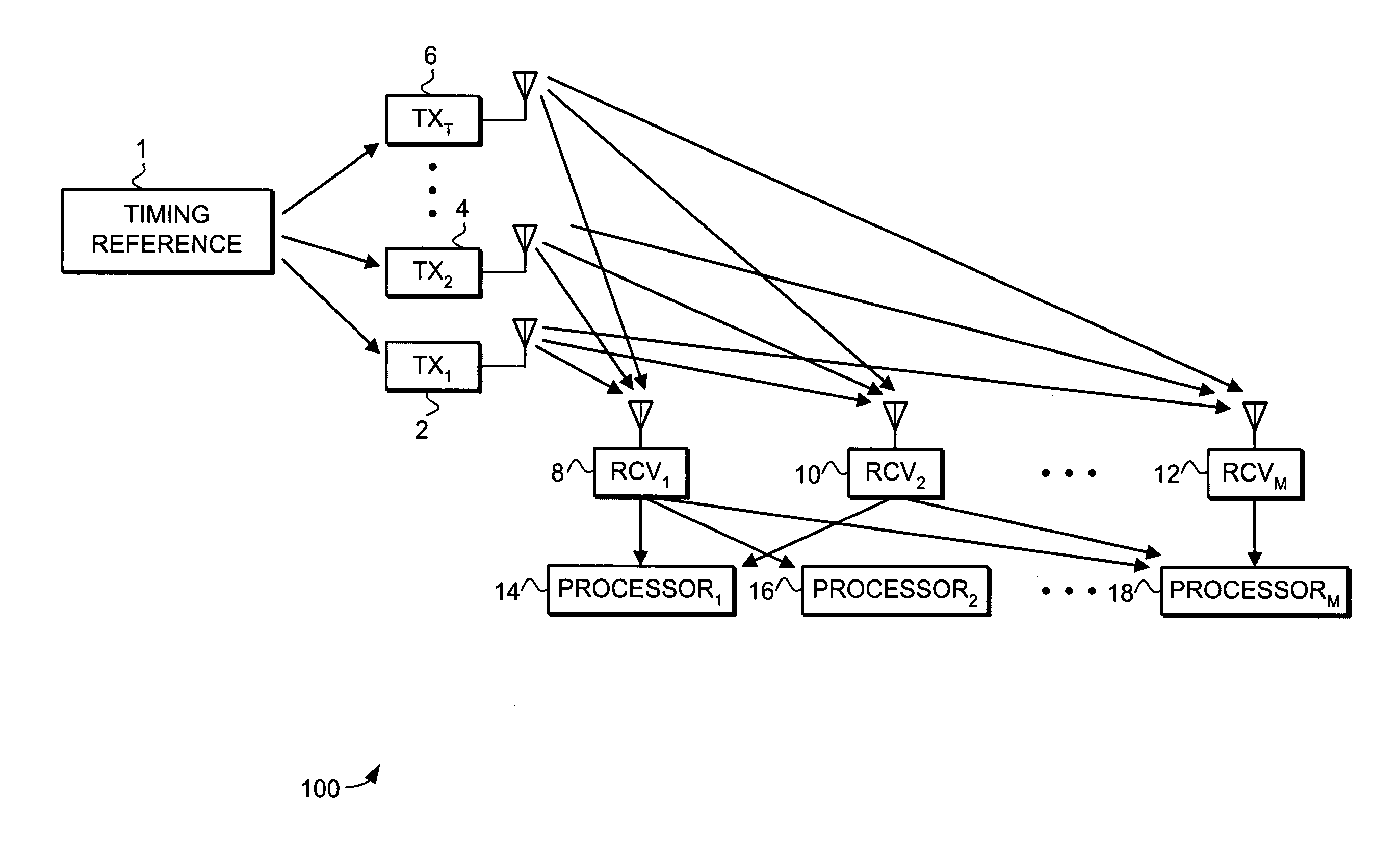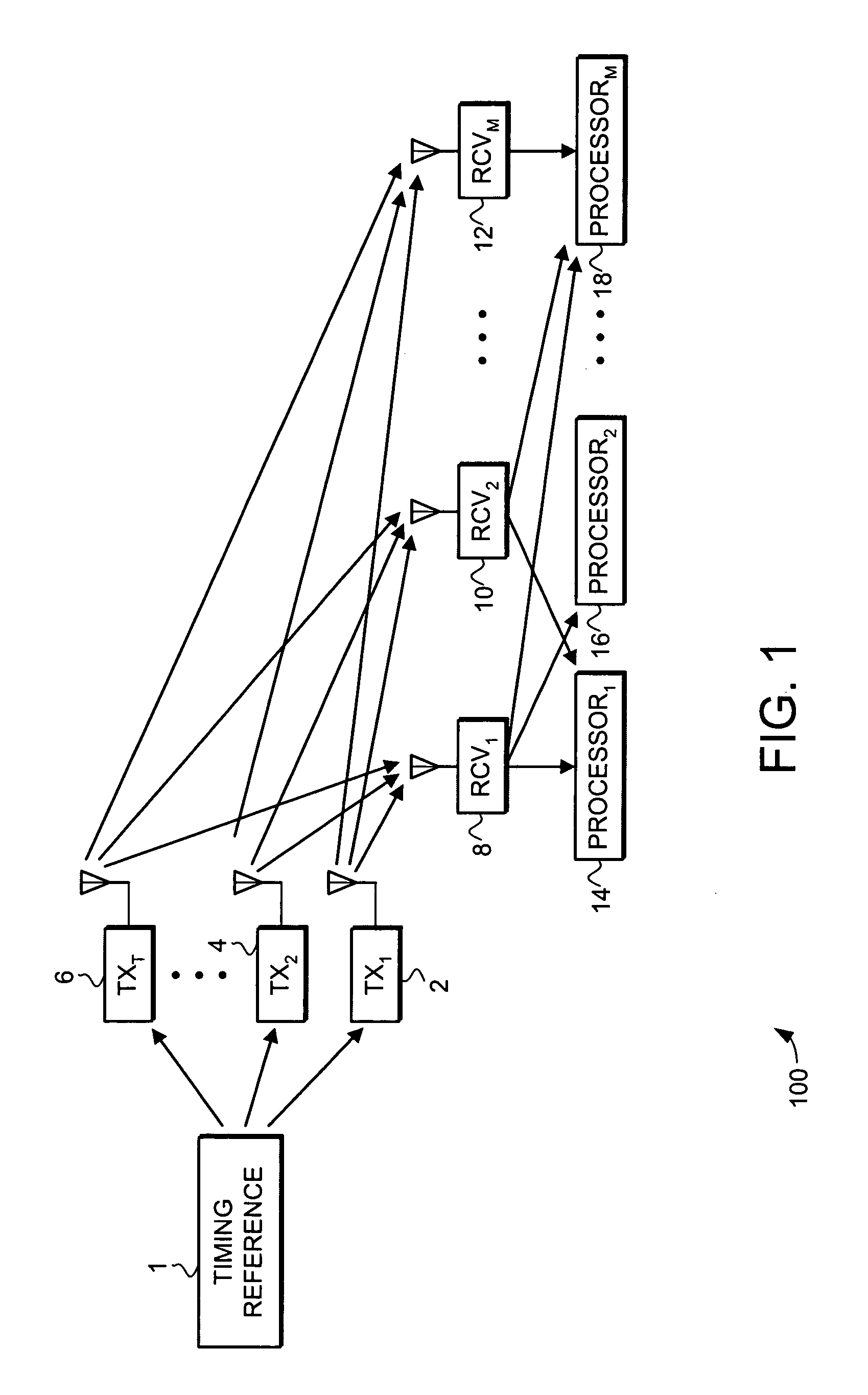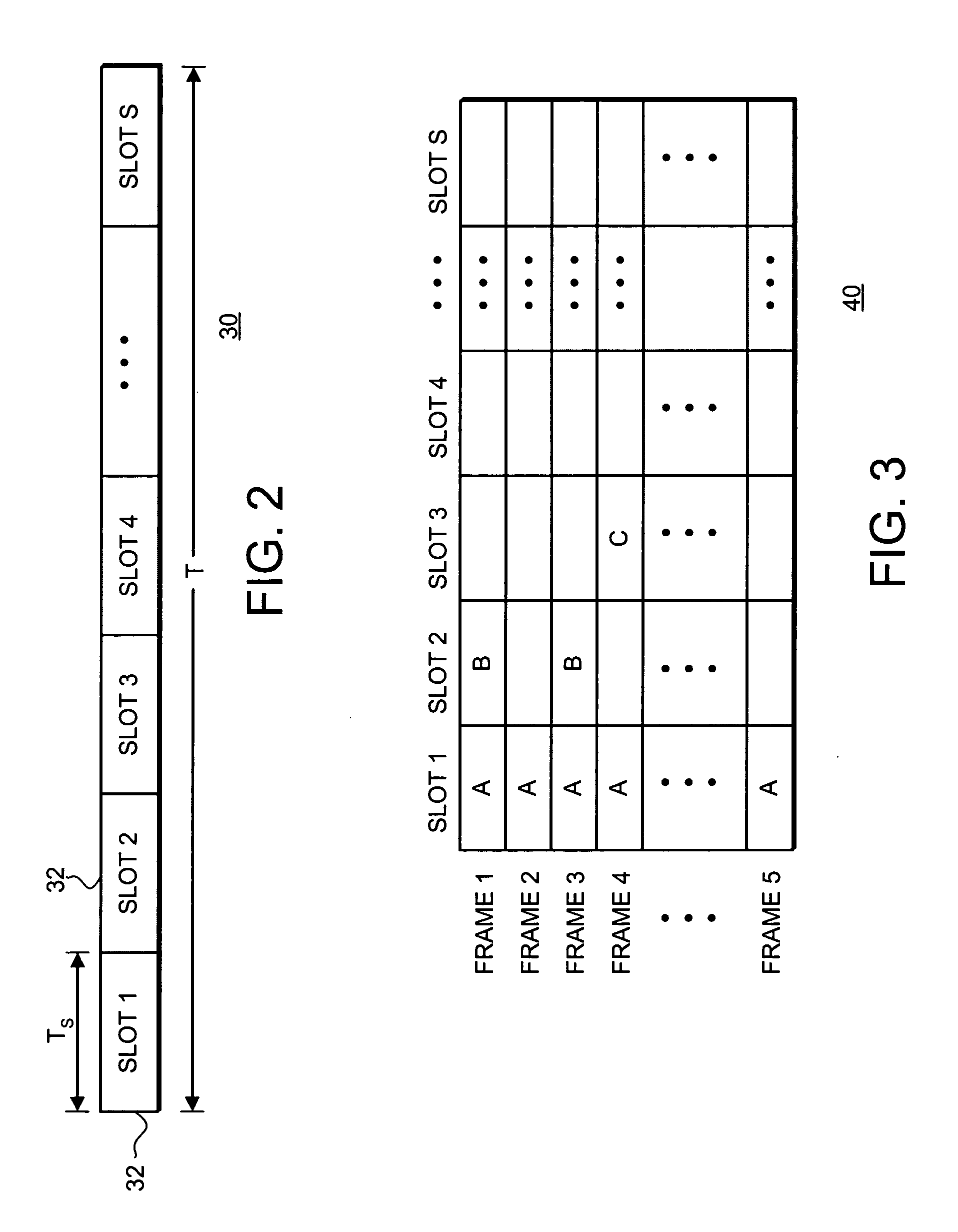System and method for variable rate multiple access short message communications
a short message and variable rate technology, applied in the field of communication systems, can solve the problems of system efficiency when transmitting only short bursts of data at low duty cycles, and the message size is too short for some applications, so as to facilitate increased message size, and efficiently use the frequency spectrum
- Summary
- Abstract
- Description
- Claims
- Application Information
AI Technical Summary
Benefits of technology
Problems solved by technology
Method used
Image
Examples
first embodiment
[0045] In first embodiment illustrated in FIG. 4A, each transmit bit set 1-M includes d bits of data as identified by blocks 59 transmitted concurrently with the d bits of data transmitted in the base transmit bit set 0. Additionally, in the embodiment illustrated in FIG. 4A the data bits transmitted in the base transmit bit set 0 and the transmit bit sets 1-M are all part of message 1. Thus, the embodiment of FIG. 4A is able to transmit one message with a total of [(d+1)*M] data bits. This is a significant increase over prior systems that would have been limited to the d bits of the base message. In some implementations, the transmission of bits on transmit bit sets 1-M can result in an 8 to 10× increase in message length, and with an increase in transmit power, can result in a 50 to 100× increase in message length.
second embodiment
[0046] In the second embodiment illustrated in FIG. 4B, each transmit bit set 1-M again includes d bits of data as identified by blocks 59 transmitted concurrently with the d bits of data transmitted in the base transmit bit set 0. In the embodiment illustrated in FIG. 4B the data bits transmitted in transmit bit set 0 are part of message 1, and the data bits transmitted in transmit bit sets 1-M are all part of message 2. Thus, the embodiment of FIG. 4B is able to transmit one message with d data bits and one message with (d*M) data bits. Again, this is a significant increase over prior systems that would have been limited to the d bits in the first message.
third embodiment
[0047] In the third embodiment illustrated in FIG. 4C, each transmit bit set 1-M includes (d+p+f) bits of message data as identified by blocks 61 transmitted concurrently with the p, f and d bits of data transmitted in the base transmit bit set 0. In the embodiment illustrated in FIG. 4C the data bits transmitted in transmit bit set 0 and the data bits transmitted in transmit bit sets 1-M are all part of message 1. Thus, the embodiment of FIG. 4C is able to transmit one message with [(M*(d+p+f))+d]data bits. Because d+p+f data bits can be transmitted in each of the transmit bit sets 1 through M, the embodiment illustrated in FIG. 4C can transmit an even larger message than those illustrated in FIGS. 4A and 4B. However, this embodiment additional buffering is typically required in the receiver as the receiver is synchronized to the P bits of the preamble and the transmit bits 1 though M arrive before this synchronization is achieved.
PUM
 Login to View More
Login to View More Abstract
Description
Claims
Application Information
 Login to View More
Login to View More - R&D
- Intellectual Property
- Life Sciences
- Materials
- Tech Scout
- Unparalleled Data Quality
- Higher Quality Content
- 60% Fewer Hallucinations
Browse by: Latest US Patents, China's latest patents, Technical Efficacy Thesaurus, Application Domain, Technology Topic, Popular Technical Reports.
© 2025 PatSnap. All rights reserved.Legal|Privacy policy|Modern Slavery Act Transparency Statement|Sitemap|About US| Contact US: help@patsnap.com



